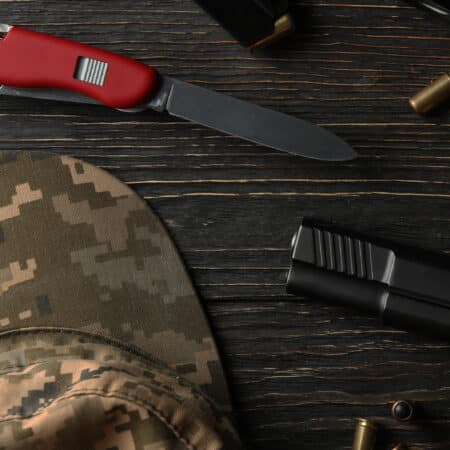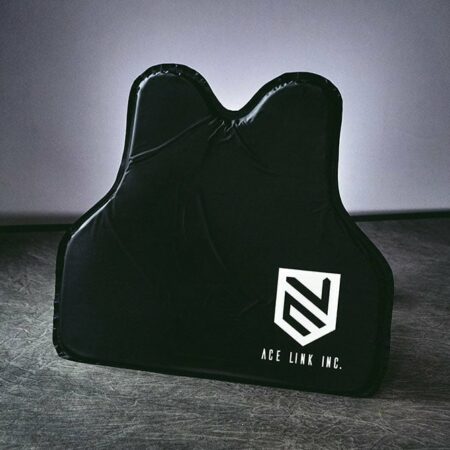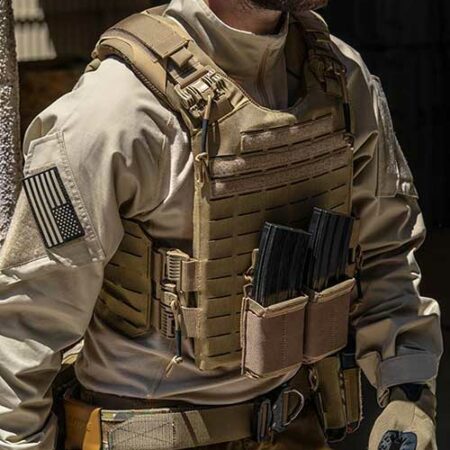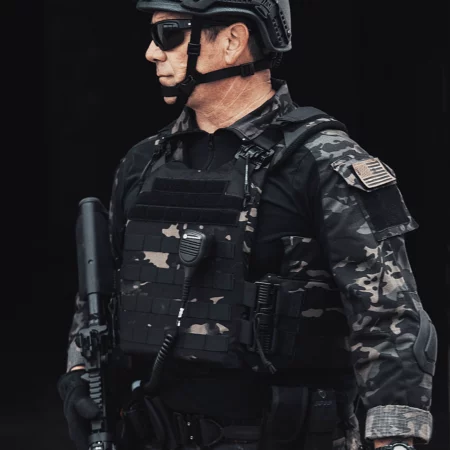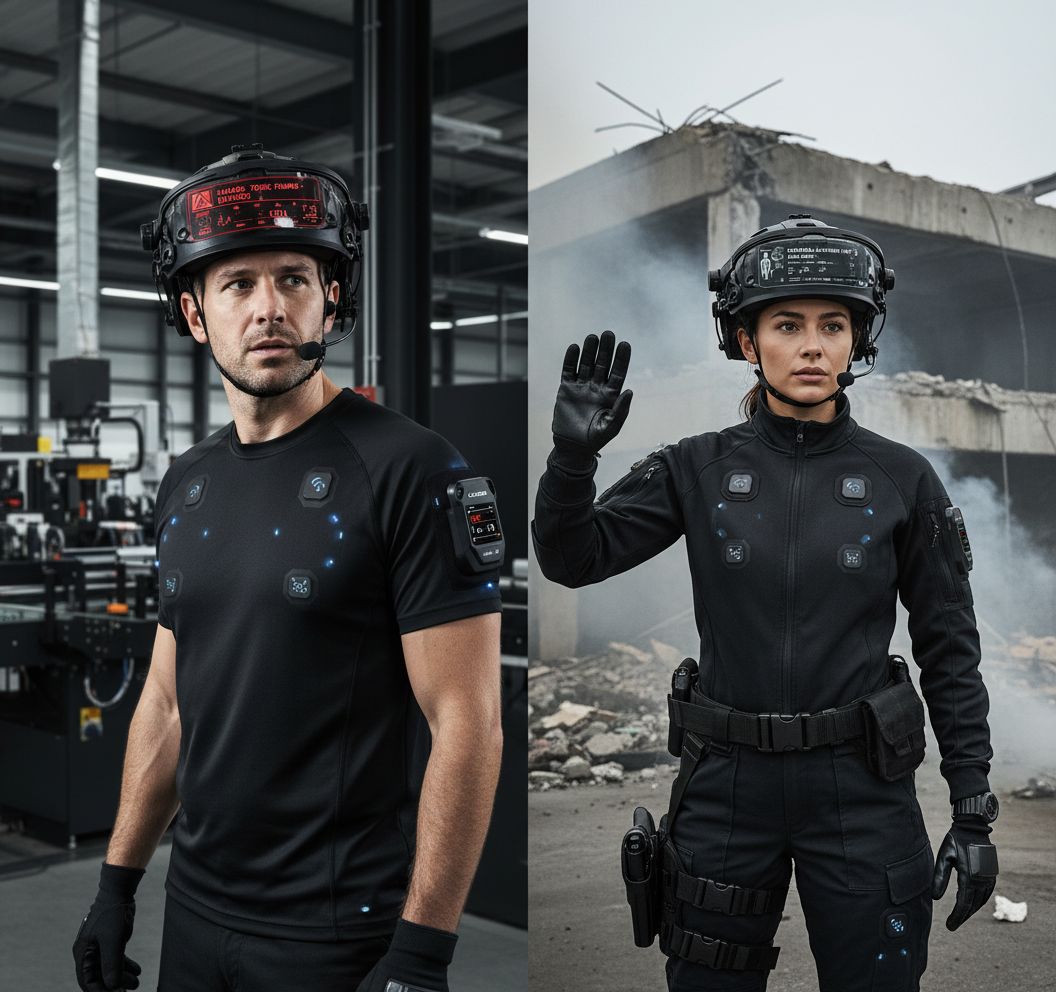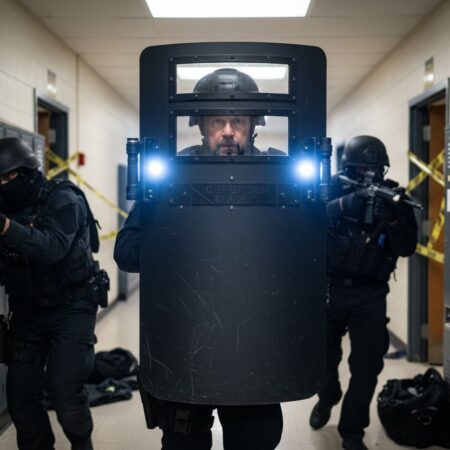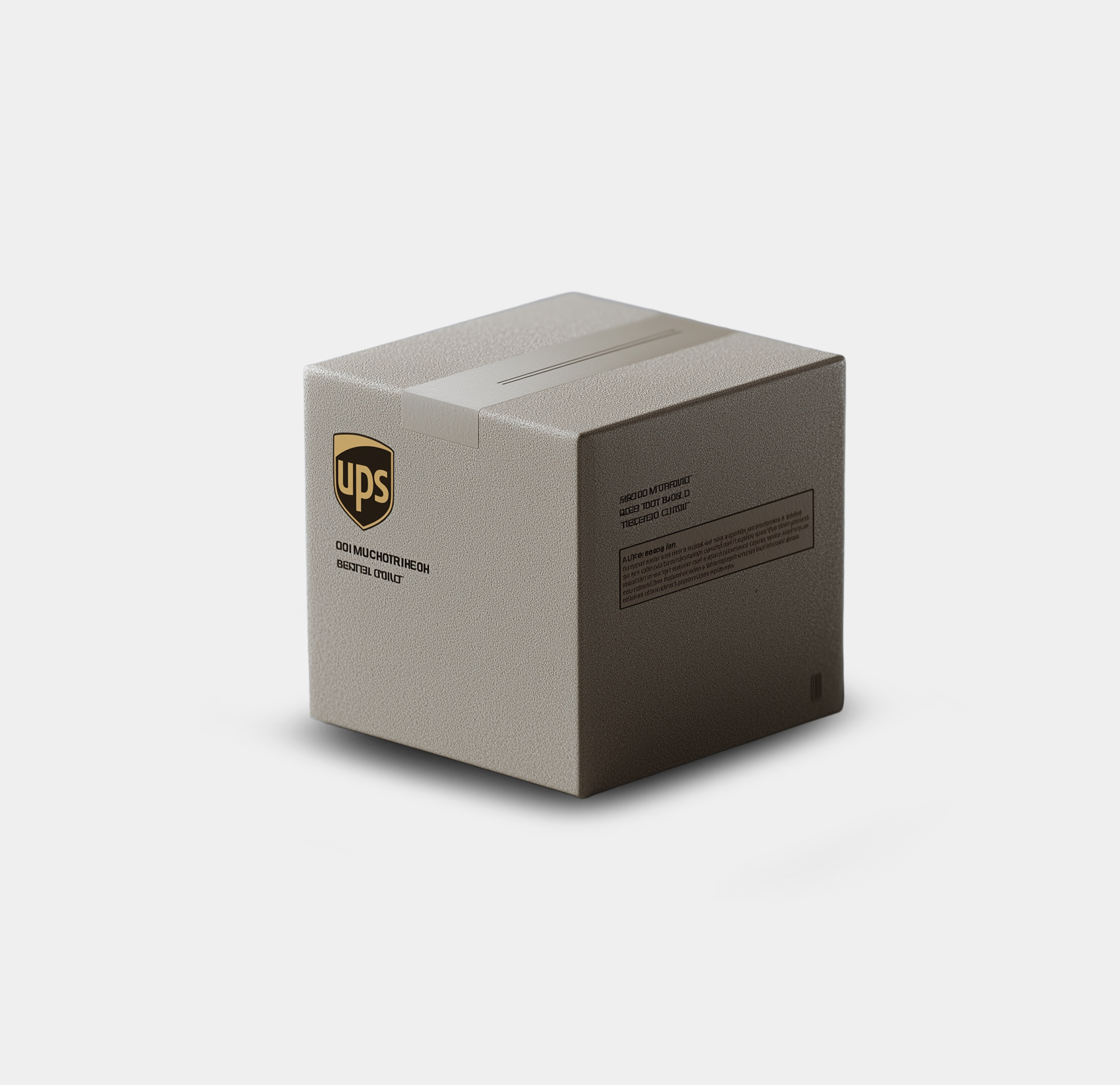- Table of Contents
- Key Takeaways
- Defining IoT Integration in Protective Gear
- Core Technologies and Sensor Types Explained
- Key Benefits for Tactical and Civilian Users
- Operational Challenges and Security Risks
- Use Cases in Law Enforcement and Security
- Upgrade Your Safety with IoT-Enabled Tactical Gear from AcelinkArmor
- Frequently Asked Questions
- Recommended
Nearly 40 percent of workplace injuries could be prevented through real-time hazard monitoring using smart technology. Today, protective gear is rapidly evolving from simple shields into intelligent guardians equipped with sensors and connectivity. This seamless blend of digital insight with physical protection means workers and responders gain quicker alerts, better health tracking, and advanced safety measures before danger even appears.
Table of Contents
- Defining IoT Integration in Protective Gear
- Core Technologies and Sensor Types Explained
- Key Benefits for Tactical and Civilian Users
- Operational Challenges and Security Risks
- Use Cases in Law Enforcement and Security
Key Takeaways
| Point | Details |
|---|---|
| IoT Integration Enhances Safety | IoT-enabled protective gear transforms safety equipment into intelligent systems that monitor physiological metrics and environmental conditions in real-time. |
| Advanced Sensor Technologies | Multi-sensor nodes provide comprehensive monitoring, capturing vital data points like heart rate and environmental hazards simultaneously. |
| Improved Decision-Making | Real-time data intelligence enables faster and informed decision-making, significantly enhancing situational awareness for tactical professionals. |
| Operational Challenges | Integration of IoT technologies brings challenges like cybersecurity and data privacy, necessitating robust strategies to mitigate risks while maximizing benefits. |
Defining IoT Integration in Protective Gear
IoT integration represents a groundbreaking transformation in protective gear technology, turning traditional safety equipment into intelligent, data-driven systems that proactively monitor and respond to environmental conditions. According to Milan Safety Research, this innovation involves embedding advanced sensors and connectivity features directly into personal protective equipment (PPE).
The core concept of IoT-enabled protective gear goes beyond simple physical protection. These smart systems can track multiple critical parameters in real-time, including:
- Wearer physiological metrics (heart rate, body temperature)
- Environmental hazard detection
- Location tracking and emergency signaling
- Impact and stress condition monitoring
By transforming traditional safety equipment into proactive tools, IoT integration dramatically enhances operational efficiency and personnel safety.
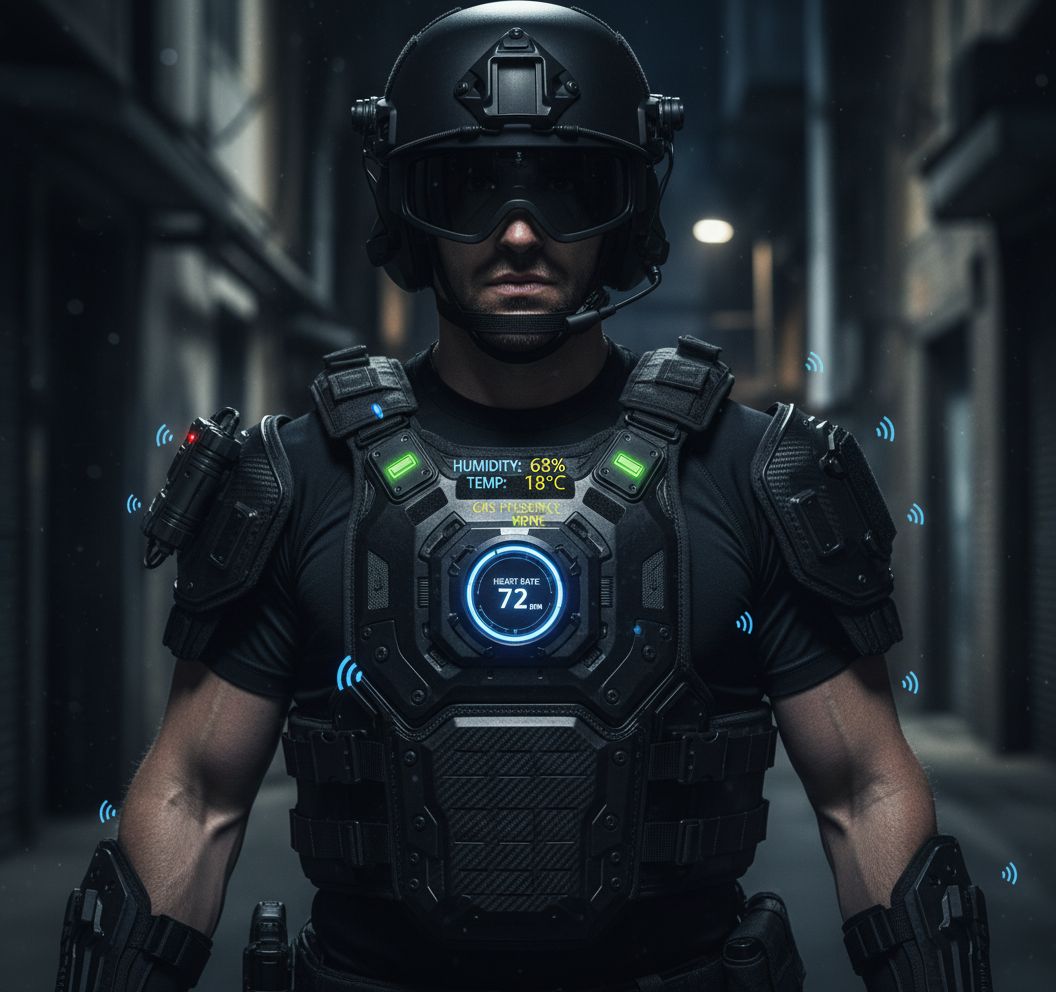 As Workwear Solutions explains, these technologies enable instant data transmission and comprehensive situational awareness, allowing immediate response to potential threats or health risks.
As Workwear Solutions explains, these technologies enable instant data transmission and comprehensive situational awareness, allowing immediate response to potential threats or health risks.
For professionals in high-risk environments like law enforcement, military, and security operations, IoT-integrated protective gear represents more than technological innovation. It’s a critical advancement that bridges human capability with intelligent monitoring, providing unprecedented levels of protection and real-time intelligence gathering. The future of personal safety isn’t just about blocking external threats – it’s about creating responsive, adaptive protective systems that work seamlessly with human performance.
Core Technologies and Sensor Types Explained
IoT-enabled protective gear represents a sophisticated ecosystem of interconnected sensor technologies designed to provide comprehensive monitoring and protection. According to EICTA Research Institute, these systems leverage multiple sensor types that communicate through advanced wireless protocols like Wi-Fi and Bluetooth, transforming traditional protective equipment into intelligent monitoring platforms.
Multi-Sensor Node Technologies form the backbone of modern IoT protective gear, integrating various specialized sensors to capture a holistic view of environmental and physiological conditions. Key sensor types include:
Here’s a summary of the core IoT sensors used in protective gear:
| Sensor Type | Main Function | Typical Measurements |
|---|---|---|
| Biometric Sensors | Monitor wearer health | Heart rate Body temperature Stress levels |
| Environmental Sensors | Detect hazards | Temperature Humidity Air quality |
| Motion/Inertial Sensors | Track movement and impacts | Acceleration Impact force |
| Gas Detection Sensors | Identify dangerous gases | Toxic gas levels Atmospheric threats |
- Biometric Sensors: Track vital signs like heart rate, body temperature, and stress levels
- Environmental Sensors: Detect temperature, humidity, air quality, and potential hazardous conditions
- Motion and Inertial Measurement Sensors: Monitor wearer movement, impact forces, and potential injury risks
- Gas Detection Sensors: Identify toxic or dangerous atmospheric conditions
Research from MDPI Sensor Technologies highlights that advanced protective gear now incorporates multi-sensor nodes capable of simultaneously tracking temperature, pressure, humidity, and potential environmental threats. This comprehensive approach enables real-time data collection and immediate threat assessment, providing professionals in high-risk environments with unprecedented situational awareness.

The integration of these sensor technologies goes beyond simple data collection. By creating an intelligent, responsive protective system, IoT-enabled gear can provide instant alerts, predictive health monitoring, and adaptive protection strategies. For professionals in law enforcement, military, and security sectors, these technologies represent a quantum leap in personal safety – transforming protective equipment from passive barriers into proactive, intelligent guardians.
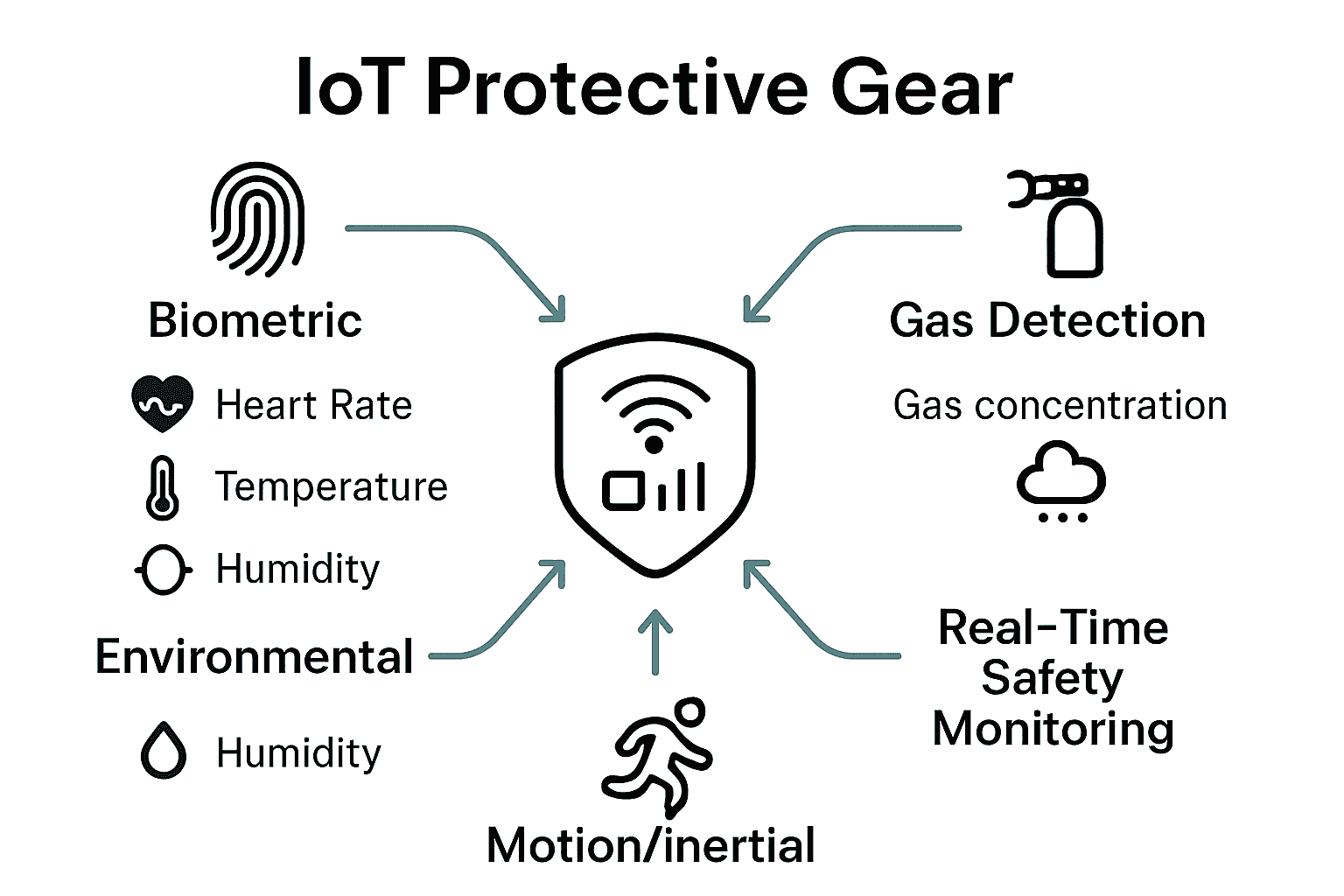
Key Benefits for Tactical and Civilian Users
IoT-enabled protective gear represents a revolutionary approach to personal safety, offering transformative benefits for both tactical professionals and civilian users. According to Milan Safety Research, these advanced systems provide enhanced safety through real-time health monitoring and immediate hazard detection, dramatically reducing potential risks in high-stakes environments.
Critical Benefits for users span multiple critical dimensions:
- Proactive Health Monitoring: Continuous tracking of vital signs and physiological stress levels
- Immediate Threat Detection: Real-time environmental hazard identification
- Performance Optimization: Data-driven insights into physical performance and fatigue
- Emergency Response Acceleration: Instant location tracking and automated alert systems
For tactical professionals like law enforcement and military personnel, these technologies provide unprecedented situational awareness. Workwear Solutions highlights that smart protective gear increases worker safety and productivity by enabling faster, more informed decision-making in complex scenarios.
Civilian users equally benefit from these technological advancements. Whether for outdoor enthusiasts, industrial workers, or individuals in high-risk professions, IoT-enabled protective gear transforms traditional safety equipment into intelligent, responsive systems. By understanding tactical gear selection, users can leverage these technologies to create a comprehensive personal safety strategy that adapts to changing environmental conditions and individual health requirements.
Operational Challenges and Security Risks
IoT-enabled protective gear, while revolutionary, confronts significant operational challenges that demand sophisticated technological and security solutions. According to research from ArXiv Cybersecurity Studies, the integration of IoT technologies into protective equipment introduces complex interoperability and data privacy challenges that require comprehensive strategic approaches.
Key Operational Challenges include:
- Complex device interconnectivity and communication protocols
- Ensuring real-time data processing and transmission
- Maintaining robust cybersecurity defenses
- Protecting sensitive personal and environmental data
- Managing battery life and power consumption of integrated sensors
Research from Advanced IoT Systems Architecture highlights the critical need for developing resilient system architectures capable of handling intricate data processing requirements while maintaining instantaneous responsiveness. The fundamental challenge lies in creating intelligent protective systems that can simultaneously monitor multiple parameters without compromising system reliability or user safety.
Cybersecurity emerges as a paramount concern in IoT-enabled protective gear. These interconnected systems potentially expose users to data breaches, unauthorized access, and sophisticated cyber intrusions. By understanding tactical gear selection, professionals can implement robust security protocols that mitigate risks while preserving the technological advantages of smart protective equipment. The future of IoT protective gear hinges on striking a delicate balance between advanced technological capabilities and comprehensive security frameworks.
Use Cases in Law Enforcement and Security
IoT-enabled protective gear is transforming operational capabilities for law enforcement and security professionals by providing unprecedented levels of situational awareness and real-time data intelligence. According to the Soldier Integrated Protective Ensemble (SIPE) research, advanced protective technologies now integrate sophisticated communication systems and heads-up displays that dramatically enhance operational effectiveness.
Critical Deployment Scenarios for IoT-enabled protective gear include:
- Perimeter Security: Continuous environmental monitoring and unauthorized movement detection
- Tactical Operations: Real-time physiological tracking and stress level monitoring
- Emergency Response: Instant location tracking and health status reporting
- Covert Surveillance: Undetectable sensor integration for intelligence gathering
- Critical Infrastructure Protection: Comprehensive threat detection and predictive risk assessment
Research on Unattended Ground Sensors (UGS) demonstrates how IoT technologies enable security teams to detect and identify unauthorized personnel movements with unprecedented precision. By understanding tactical gear selection, professionals can strategically deploy smart protective systems that provide multilayered intelligence and enhanced situational awareness.
For law enforcement and security personnel, these technologies represent more than incremental improvements. They fundamentally reshape operational paradigms, transforming protective gear from passive equipment into active, intelligent systems that provide real-time strategic advantages. The future of security operations lies in these adaptive, data-driven protective technologies that can anticipate, analyze, and respond to complex threat environments.
Upgrade Your Safety with IoT-Enabled Tactical Gear from AcelinkArmor
The article highlights how IoT integration transforms traditional protective gear into intelligent, real-time safety systems. Key challenges include the need for reliable, multi-sensor monitoring and secure data transmission to keep you safe in high-risk environments. If you value proactive health tracking, immediate hazard detection, and advanced situational awareness, choosing the right gear designed for these demands is critical.
At AcelinkArmor.com, we specialize in providing tactical and personal protective equipment built to meet rigorous safety standards. Our extensive catalog features TOP grain body armor with options like Level IV and IIIA protection, ballistic helmets, and plate carriers designed for durability and integration with modern sensor technologies. Equip yourself today and experience the peace of mind that comes from smart, resilient gear tested for the most demanding missions.
Don’t wait until the next threat to upgrade your defense. Explore our products now at AcelinkArmor.com and build your smart protective system that adapts with you and keeps you ahead.
Frequently Asked Questions
What is IoT-enabled protective gear?
IoT-enabled protective gear refers to personal protective equipment (PPE) that incorporates advanced sensors and connectivity features. This technology enhances traditional safety equipment by monitoring environmental conditions and wearers’ physiological data in real time.
How does IoT integration improve safety for users?
IoT integration enhances safety by providing proactive health monitoring, immediate hazard detection, performance optimization, and faster emergency response capabilities through real-time data collection and alerts.
What types of sensors are used in IoT-enabled protective gear?
Typical sensors include biometric sensors for monitoring health metrics, environmental sensors for detecting hazards, motion/inertial sensors for tracking movement, and gas detection sensors for identifying harmful gases.
What challenges does IoT-enabled protective gear face?
Key challenges include ensuring device interoperability, real-time data processing, maintaining cybersecurity, protecting sensitive data, and managing the battery life of integrated sensors.
Recommended
- Tactical Gear Buying Guide: Choose the Right Security Equipment
- Why Body Armor is the Most Thoughtful Gift for 2025 – Ace Link Armor
- Best Pouches and Accessories Security Officers Must Have – Ace Link Armor
- Preparedness Guide – Take Responsibility for Your Safety – Ace Link Armor
- Preventing Workplace Injuries: Essential Safety Steps – WorkWearComfort







